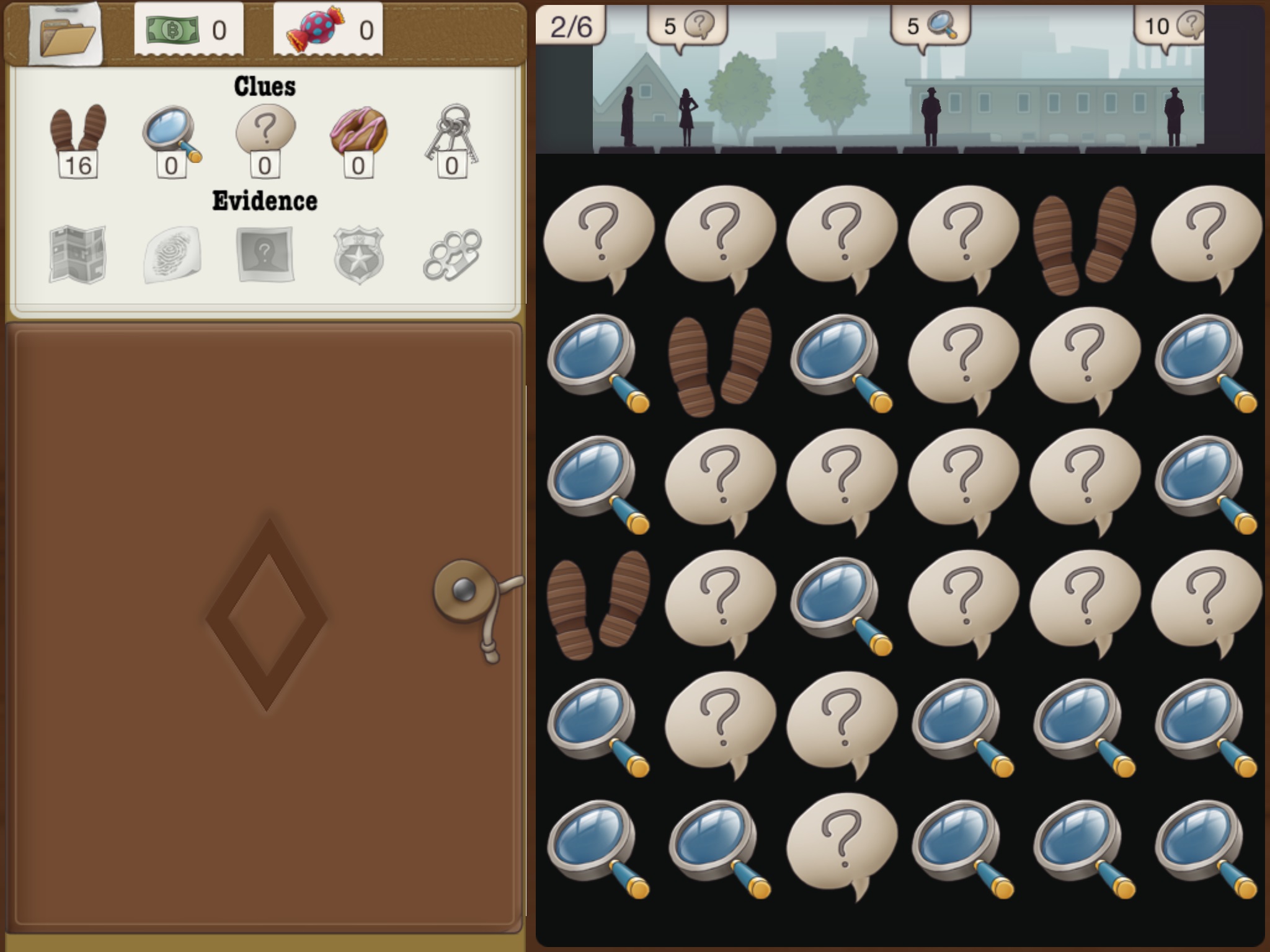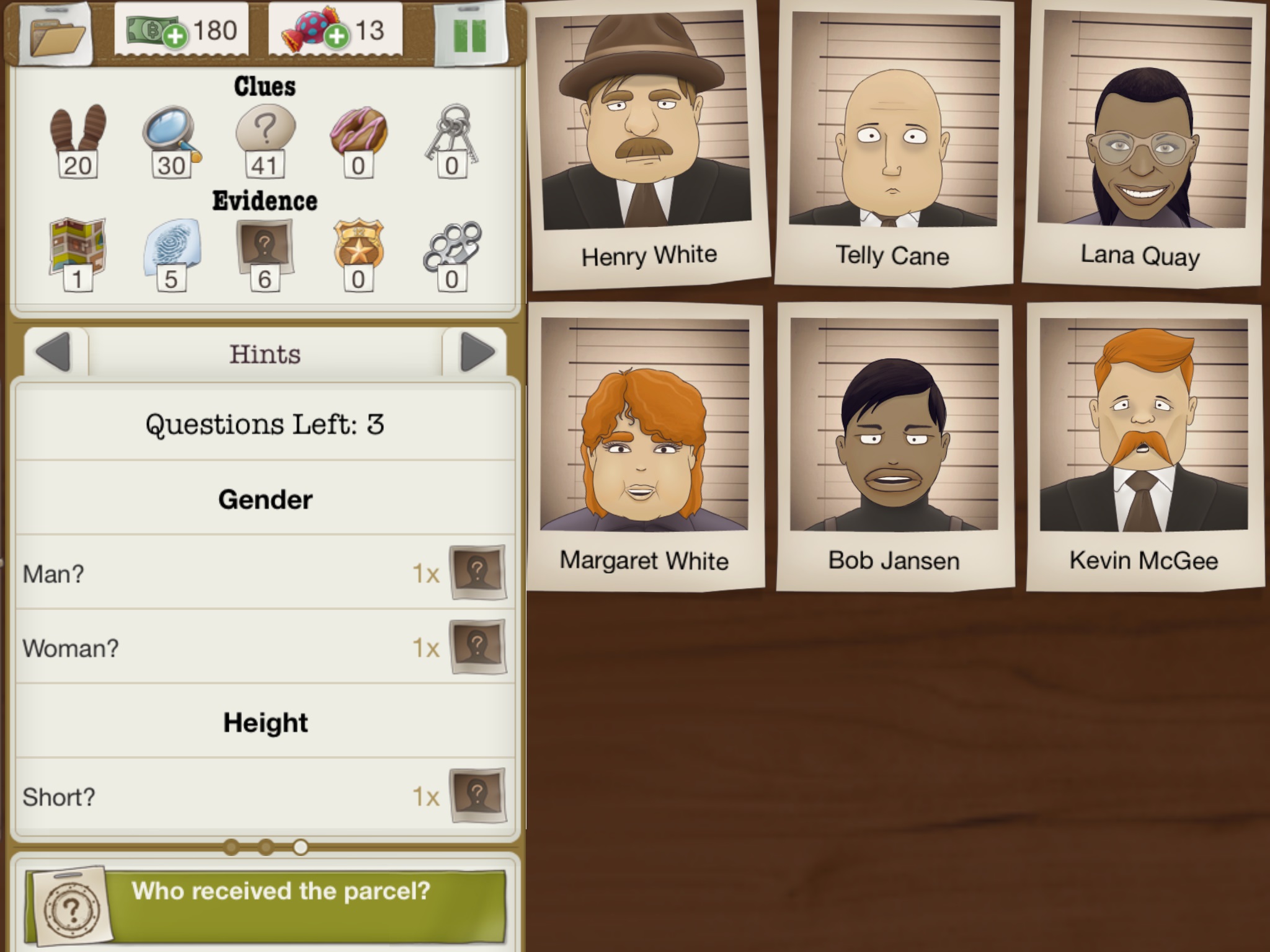 Fancy yourself as a bit of a detective? Want to solve the most ludicrous cases in a world where candy is strictly forbidden? Publisher Chillingo’s latest game takes the simple aspects and ideas of a puzzle game and give it a whole new meaning to the word “depth.” Taking hold of the reigns and steering players in a completely new direction, Another Case Solved (Free) is a humorous light-hearted take on the whodunit genre, with a distinctively interesting variety of puzzles all incorporated and combined into one fine game.
Fancy yourself as a bit of a detective? Want to solve the most ludicrous cases in a world where candy is strictly forbidden? Publisher Chillingo’s latest game takes the simple aspects and ideas of a puzzle game and give it a whole new meaning to the word “depth.” Taking hold of the reigns and steering players in a completely new direction, Another Case Solved (Free) is a humorous light-hearted take on the whodunit genre, with a distinctively interesting variety of puzzles all incorporated and combined into one fine game.
You are placed in the shoes of a private investigator, who is just starting out their career in a town completely devoid of candy due to the recent abolishment of any sugary products. From this point on, you’re tasked with building up your reputation by taking on a series of interesting cases that include anything from retrieving lost items to finding missing cats, all whilst working up the ladder to bigger and better cases. The greater your reputation, the higher the pay, dependent on the case involved. The storyline itself is a bit of a mixed bag; instead of focusing on the whole sugar ban plot, it seems instead to just revolve around a series of small menial jobs whilst working towards the fancier more rewarding full-blown cases. In other words, the plot is irrelevant to the actual gameplay mechanics itself, and you can take it or leave it as it is.

In typical puzzle game fashion, it’s up to the user to match a series of identical tile icons by swiping in a variety of directions. Players can select a whole matching row of tiles in any fashion they like, so long as they are sat adjacent to each other. In turn, accumulating tiles will reveal a whole variety of clues and evidence to support the case further, and a specific number of clues must be collected in order to clear the case or acquire a full three star rating.
Matching various tiles results in different types of evidence; for example, footprints will retrieve clues in the form of maps, speech bubbles will help gather photo clues, and magnifiers will accumulate fingerprints. Furthermore, the mini objective guide at the top of the screen allows you to see how many of each must be collected in order to advance, but the drawback is you only have a certain number of moves in order to collect them all.

Luckily, help is at hand with a series of available tools to use at your own discretion. As the game progresses, it’s possible to unlock more, but initially you’ll be given the option to use items that will not only shuffle the clues on the board, but the option to change them or collect the tiles between 3 pins. However, there’s a three usage limit in your inventory for each, meaning it’s advisable to keep an eye on how many you have left just in case you need to “purchase” more before embarking on a case.
As you advance, you have the ability to unlock more interesting major cases that incorporate a range of enjoyable mini-games. These include puzzles that involve searching for a specific location through a series of clues, upon which its thereafter possible to explore the building to locate whatever it is that is missing. During this section you’ll have an allotted time of “55 minutes” in total to search the building, and each room or object searched discounts a specific number of minutes. From this point on, in identity parade fashion, players are given a selection of interesting looking characters, and in a style similar to “Guess Who?” have to eliminate various features and aspects from a series of questions to figure out the correct person responsible for the crime.

Partaking in the larger cases will mean solving the minor ones found in the papers, but this has its own benefits, namely the ability to collect more cash in order to buy more equipment, tools and furniture, which all have their own perks. Furthermore, by decking out your office, it opens the opportunity for further challenges and unlocks new abilities, which you can use to map out intuition and foresight, amongst other things.
Along the way, it’s possible to accumulate candy as you go by keeping an eye on the objective guide at the top of the screen whilst in puzzle mode, but there’s also the option to partake in a candy hunt roughly every 12 hours in order to retrieve free candy to add to the stash for future usage. Furthermore, if you invest your in-game currency into buying a “telephone,” you can use this to watch unobtrusive adverts in the form of videos in order to collect a candy for each one watched successfully.
Another Case Solved starts off fairly easy, but gradually gets more tough as you advance. Though I wasn’t initially utilizing many of the tools, I did find that it became much harder to progress without them further down the line. Not only do you only get a certain amount to hoard in your inventory (up to 3 of each), it also means that it becomes increasingly necessary to delve into the world of in-app purchases in order to continue with the game at a reasonable pace. Playing sporadically will also give you more time for your energy to replenish, as only so many cases can be solved dependent on the number of newspapers you acquire.
Progressing casually aided towards the overall satisfaction in playing, but would definitely have scored higher on the fun-factor scale had it been designed with the players enjoyment in mind. Sadly Another Case Solved latches a little too hard on the freemium model, which in turn holds it back from being the marvellous game it has aspired to be.